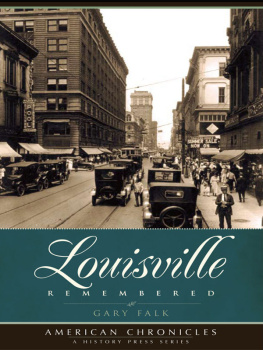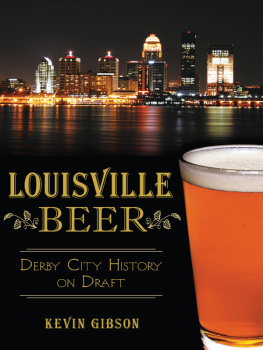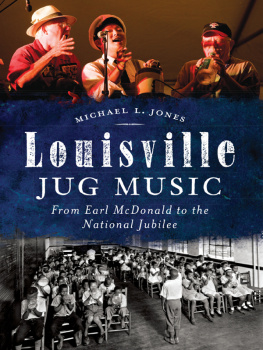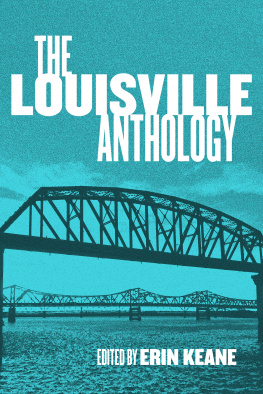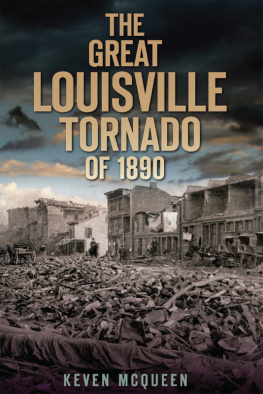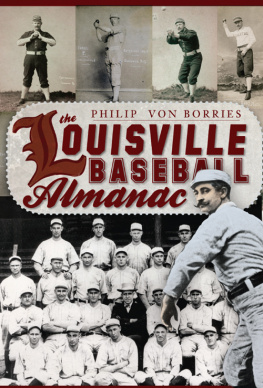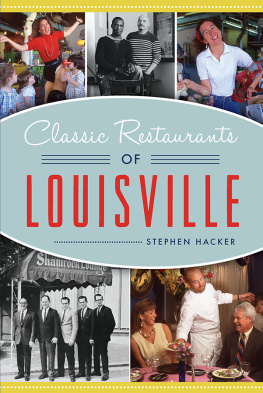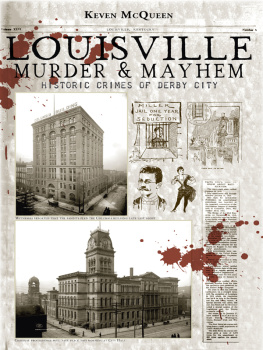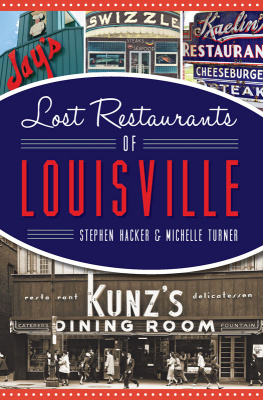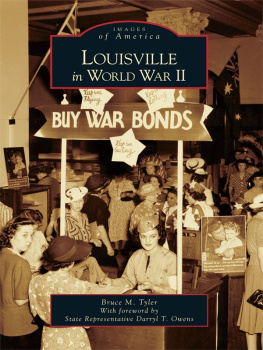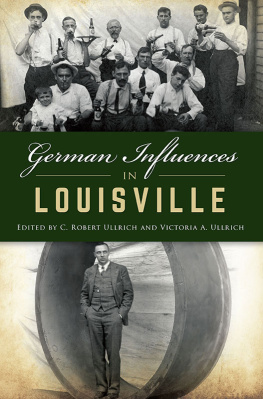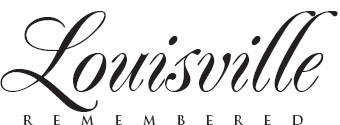
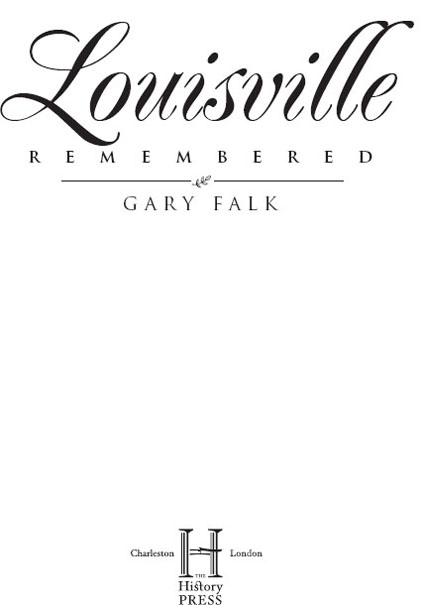
Published by The History Press
Charleston, SC 29403
www.historypress.net
Copyright 2009 by Gary Falk
All rights reserved
All images are courtesy of the authors private collection unless otherwise noted.
First published 2009
Second printing 2013
e-book edition 2013
Manufactured in the United States
ISBN 978.1.62584.300.5
Library of Congress Cataloging-in-Publication Data
Falk, Gary.
Louisville remembered / Gary Falk.
p. cm.
Includes bibliographical references.
print edition ISBN 978-1-59629-628-2
1. Louisville (Ky.)--History. 2. Louisville (Ky.)--Biography. 3. Industries--Kentucky--Louisville. I. Title.
F459.L857F35 2008
976.94404--dc22
2008055293
Notice: The information in this book is true and complete to the best of our knowledge. It is offered without guarantee on the part of the author or The History Press. The author and The History Press disclaim all liability in connection with the use of this book.
All rights reserved. No part of this book may be reproduced or transmitted in any form whatsoever without prior written permission from the publisher except in the case of brief quotations embodied in critical articles and reviews.
Contents
Acknowledgements
I wish to thank the many individuals who have offered assistance, some with specific suggestions and counsel, others with their support and camaraderie.
First of all, I am grateful to the late George Yater. His book Two Hundred Years at the Falls of the Ohio remains the definitive single volume of our local history.
Being part of the Louisville Historical League has been a defining aspect of my life. This organization is made up of a whos who in pursuing, protecting and documenting the history of Louisville and southern Indiana: Steve Wiser, architect and president of the league, whose book Louisville 2035 offers insights on the Louisville of the future; Rick Bell, author of The Great Flood of 1937; Chuck Parrish, who literally wrote the book on the history of the Portland Canal and the McAlpine locks and dam project revision; Ken Machtolff, Walter Hutchins; Mike Zanone; and archaeologist Lori Stahlgren.
In addition, thanks go to Jim Holmberg, curator of Special Collections at the Filson Historical Society; Bill Carner at the University of Louisville Photo Archives; Tom Owen, Louisville historian; Joe Hardesty at the Louisville Free Public Library; and John Kleber, editor of The Encyclopedia of Louisville. I am grateful to my wife, Dorissa, without whose able moral support, proofreading and assistance this would not have been possible.
Introduction
There are stories within stories in the urban history of a city. Many of the most fascinating tales about our city of Louisville are still waiting to be rediscovered.
This process of discovery has been my motivation since I started writing a series of articles in 2004 entitled Looking Back for the monthly publication of the Louisville Historical League, The Archives. These articles form the basis for this book.
To be certain, much of Louisvilles history has been carefully chronicled since the founding of the city. The westward migration, the Lewis and Clark Expedition, the importance of the Falls of the Ohio and many of the essential players, such as George Rogers Clark, Thomas Bullitt, Richard Chenoweth and others, have received serious attention. James Guthrie, sometimes referred to as Mr. Louisville, was pivotal in helping Louisville become the metropolis that it is today. Important families such as the Speeds and the Binghams have received well-deserved attention.
Much of this history has culminated in the essential publication entitled The Encyclopedia of Louisville (University of Kentucky Press, 2001, John Kleber, editor), which should be the centerpiece of any library dedicated to Louisvilles history.
My hope and expectation is that I may acquaint the reader with some of those stories within stories of this city that might otherwise have gone unnoticed.
PART I
Defining Personalities
CHARLES K. CARON, INVENTOR OF THE CARON DIRECTORY
To genealogists, urban researchers and businesses, the Caron city directory is a valuable asset in searching for information about the urban landscape and the persons and things contained in it.
Since 1871, the Caron directory has been a powerful tool in our city of Louisville; it chronicles who lived where and when, what businesses existed and where they were located and also tells us about the advertising of each period, since it is the advertisingplaced there to pay for these directoriesthat unwittingly helps to tie all of this information together. The directory offers cross-references for us to locate residential, government and business locations.
The Louisville Caron directory was the invention of Charles K. Caron. It was originally published at 104 West Green Street (Liberty), the same physical location that today is 316 West Liberty. Mr. Caron died in 1903, but the directory was continued by his coworker Stephen D. Smith and Carons sons, Charles L. and L.S. Caron. They expanded the shop to serve other businesses, requiring a specialty of linotype compositionprinting catalogues, newspapers, magazines and briefs. The company was eventually able to expand to other cities. The Louisville publishing house printed directories for Paducah, Frankfort, Hopkinsville, Winchester, Henderson and Maysville, Kentucky, along with many Indiana towns, including New Albany, Bloomington and Jeffersonville. Xenia, Ohio, was even included.
Eventually, the publisher moved to a new plant located at 127 South Third Street.
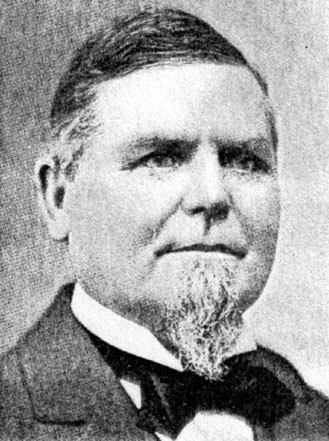
Charles K. Caron.
The Caron directory of Louisville remained under the Caron name until around 1975, when it became part of Polk and Company, which is located in Taylor, Michigan. The city directories still remain a major research tool for historians. The crisscross address feature, just like the crisscross directories themselves (since 1939), offer a relatively easy way to trace property lineage.
CHARLES FARNSLEYLOUISVILLES THREE-TIME MAYOR
Louisville has a long history of mayors who have left an enduring legacy. The original charter of the city allowed an election to be held for mayor with the top two candidates being presented to the governor, who would then choose between them for a one-year term. Our first mayorship owner and member of the Rhode Island militia, John Bucklin (182834)was chosen to serve six one-year terms. Eventually, mayors were elected for a single four-year term but could not succeed themselves.
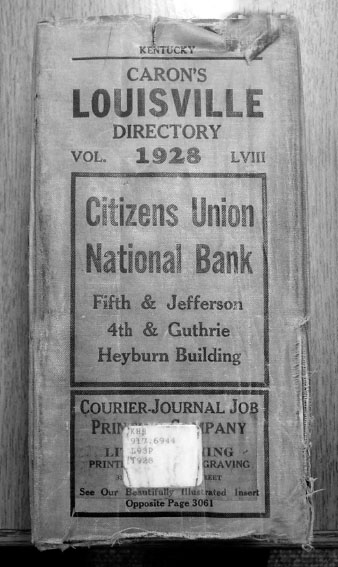
The spine of a Caron directory.
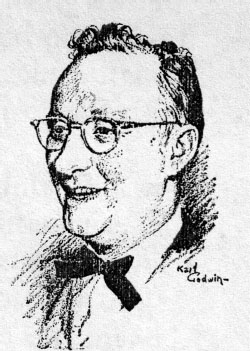
A caricature of Charles Farnsley. Courtesy of Readers Digest.
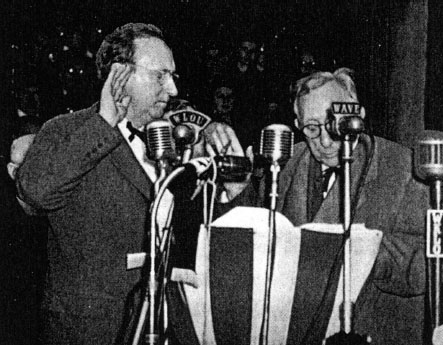
Charles Farnsleythe only mayor, to this day, sworn in for a third time. His father, Judge Burrell Farnsley, administers the oath.
Next page
